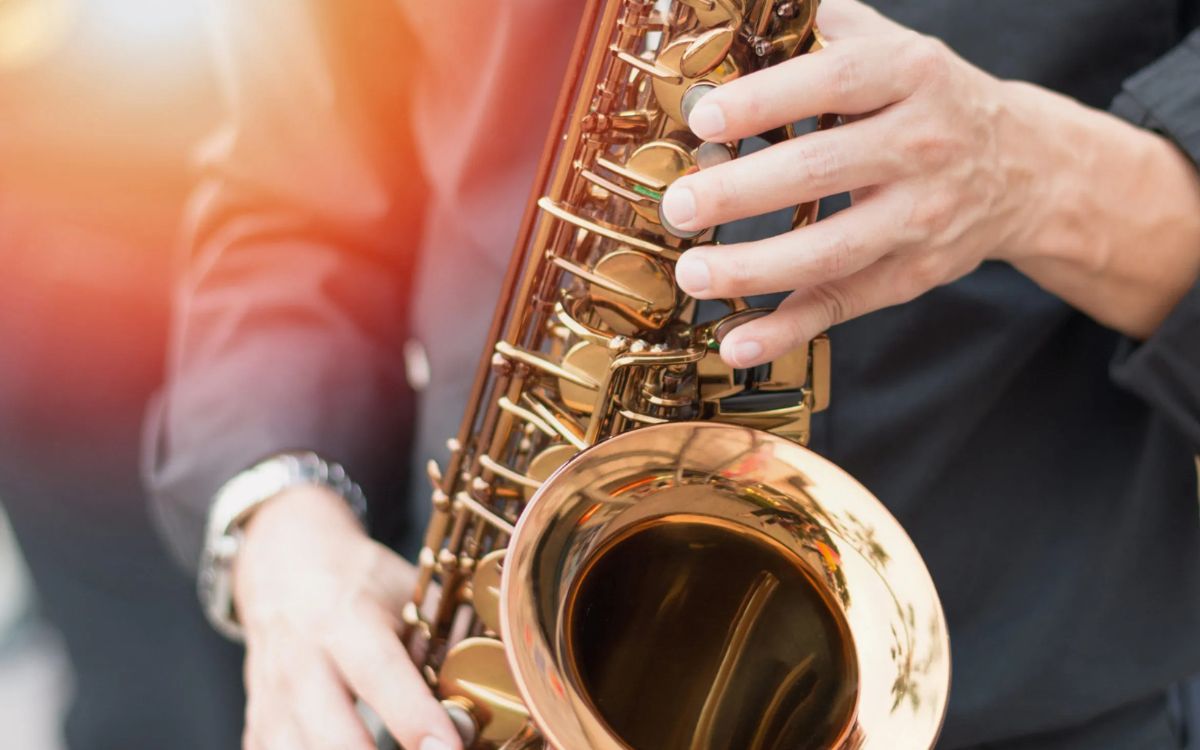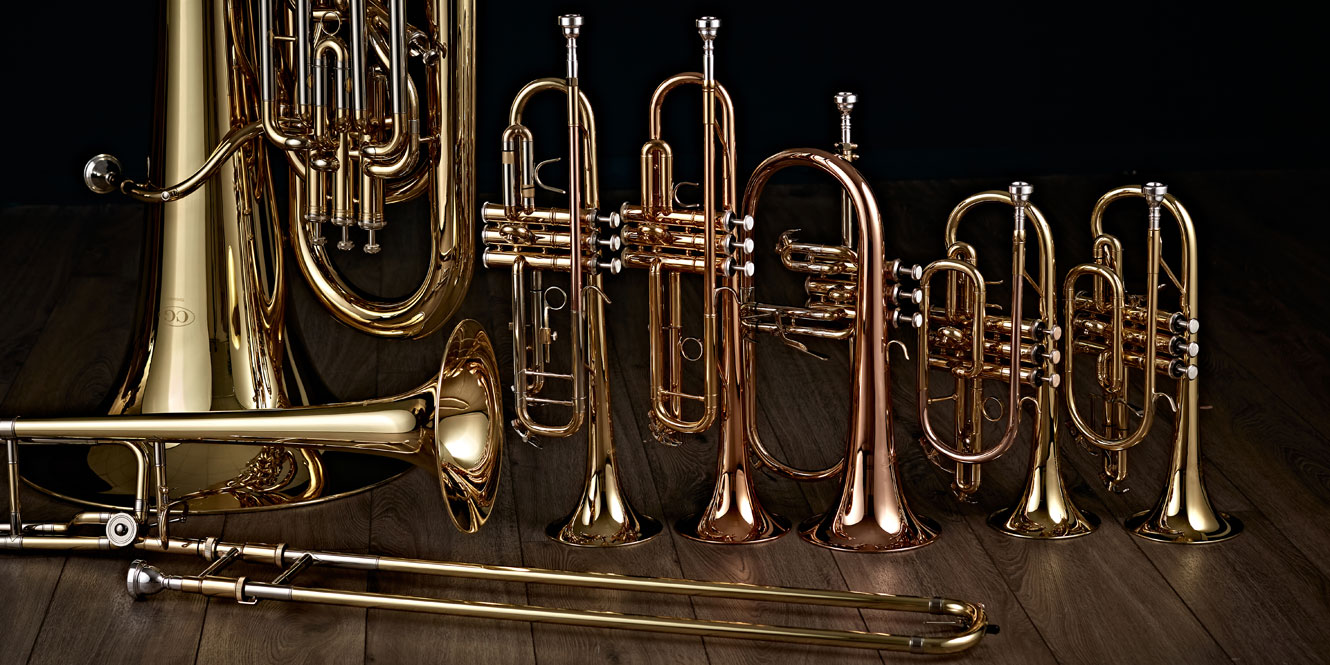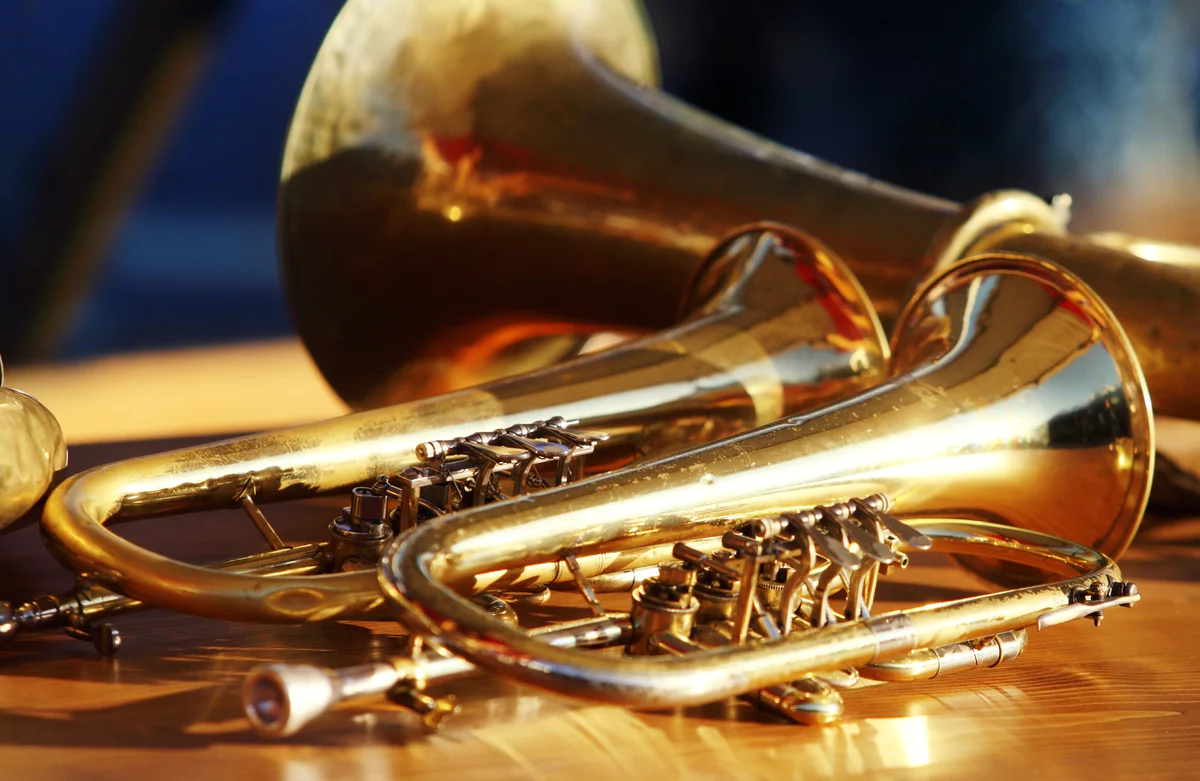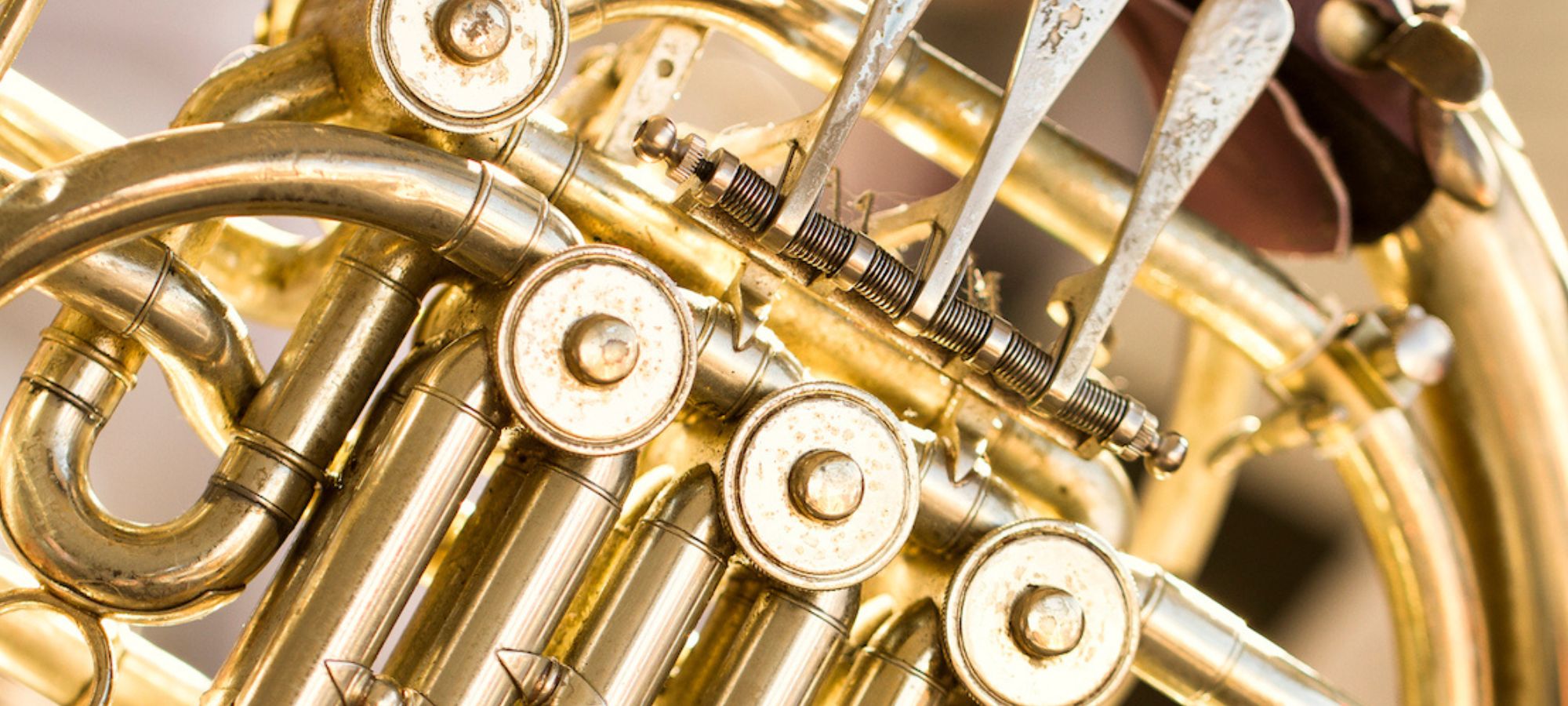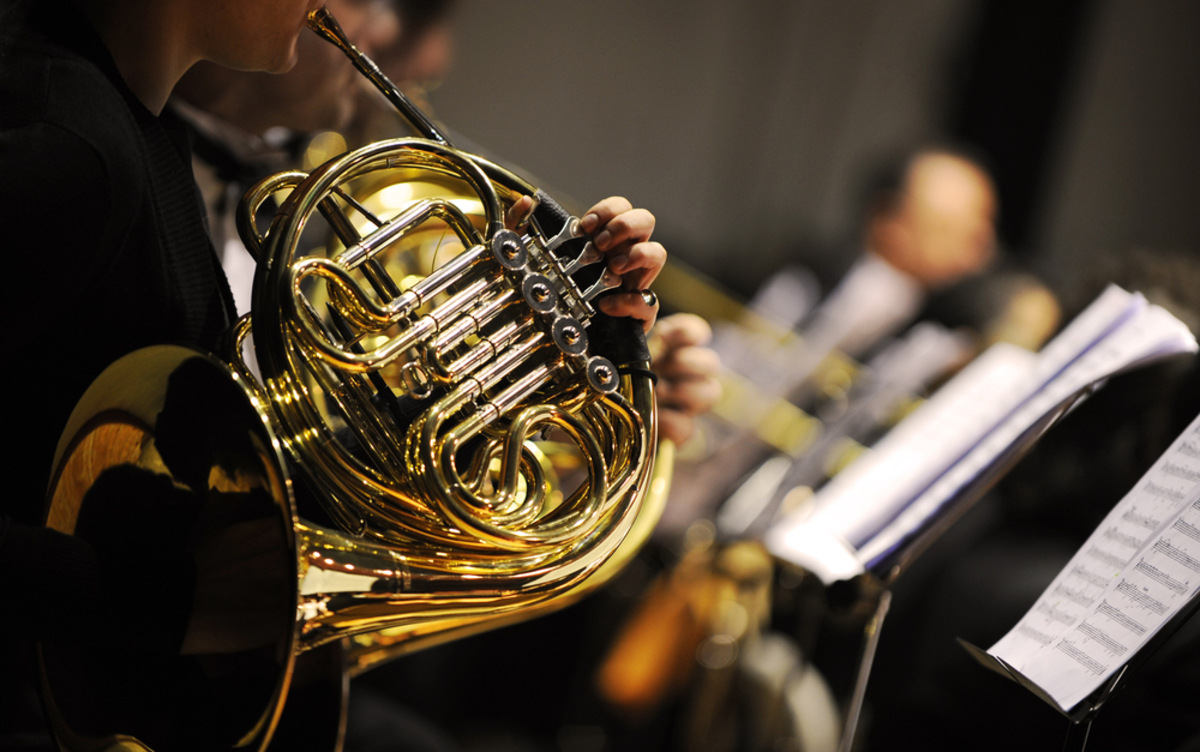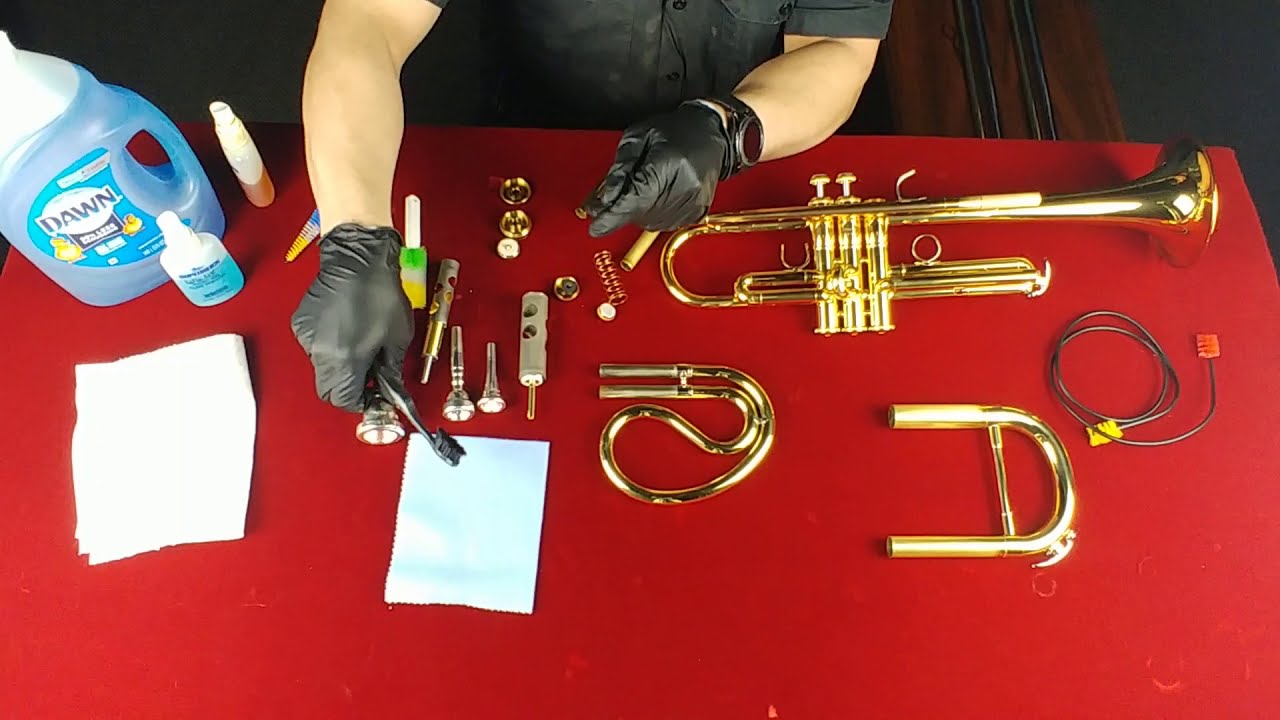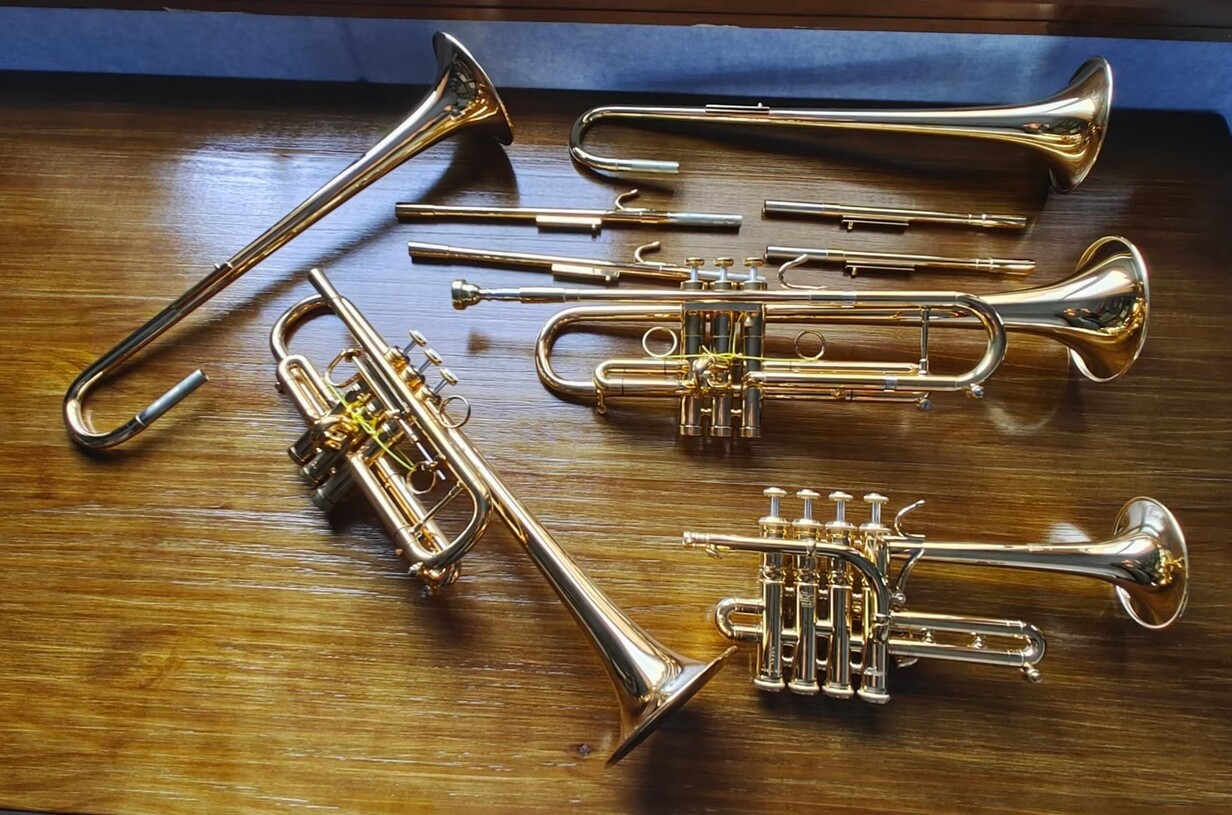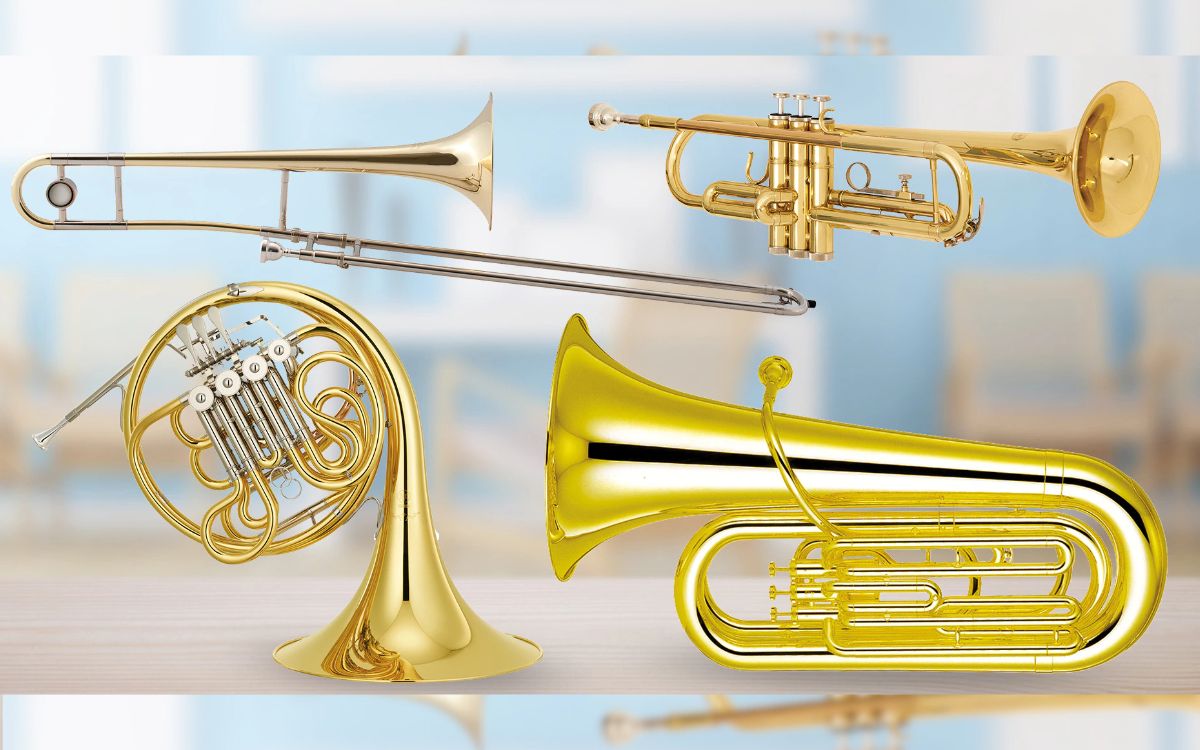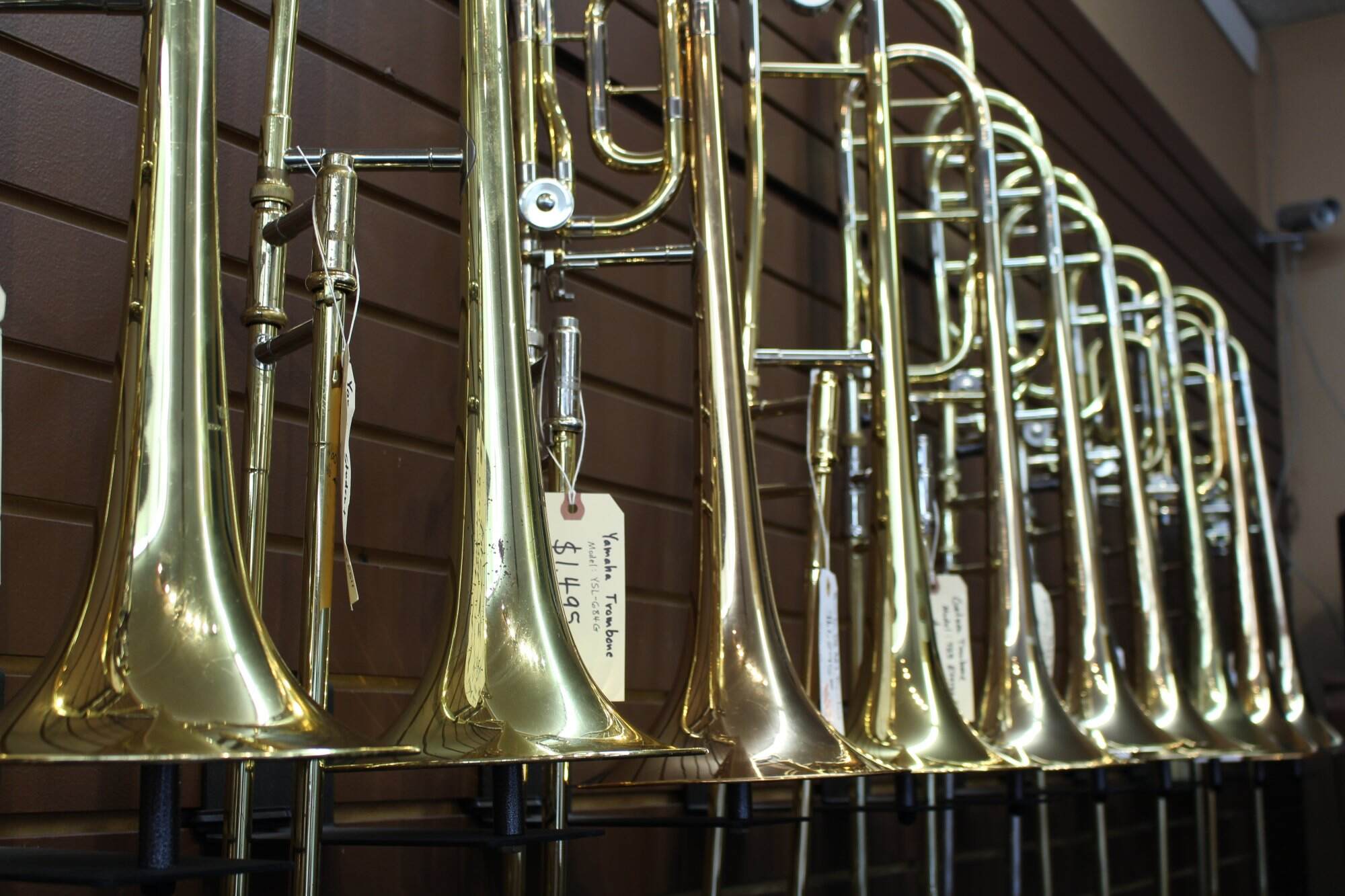Home>Instruments>Brass Instruments>How To Play Vibrato On Brass Instruments
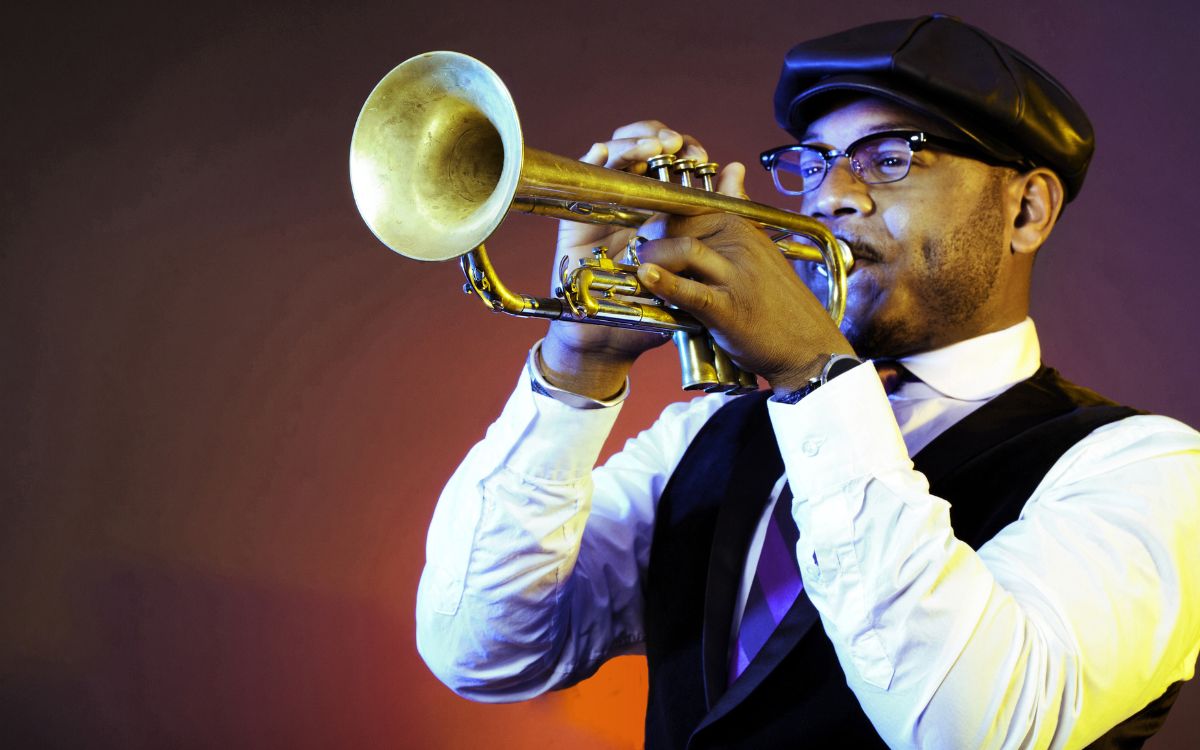

Brass Instruments
How To Play Vibrato On Brass Instruments
Published: January 15, 2024
Learn how to play vibrato on brass instruments and add a captivating touch to your music. Enhance your skills with our expert guide.
(Many of the links in this article redirect to a specific reviewed product. Your purchase of these products through affiliate links helps to generate commission for AudioLover.com, at no extra cost. Learn more)
Table of Contents
- Introduction
- What is Vibrato?
- Benefits of Using Vibrato on Brass Instruments
- Common Challenges in Learning Vibrato on Brass Instruments
- Steps to Play Vibrato on Brass Instruments
- Proper Technique for Vibrato on Brass Instruments
- Exercises to Develop Vibrato on Brass Instruments
- Tips for Mastering Vibrato on Brass Instruments
- Common Mistakes to Avoid While Playing Vibrato on Brass Instruments
- Conclusion
Introduction
Brass instruments are renowned for their powerful sound and versatility in musical genres ranging from classical to jazz to pop. Whether you’re a beginner or an experienced player, mastering the technique of vibrato can add depth and expressiveness to your playing.
Vibrato is a technique commonly used by brass musicians to add a subtle fluctuation in pitch to their notes. It involves a slight oscillation in pitch, created by rapidly alternating the air pressure while playing a sustained note. This creates a warm and vibrant sound that adds texture and emotion to the music.
Learning to play vibrato on a brass instrument can be challenging yet rewarding. It requires precise control of the embouchure, air speed, and fingerings. But with dedicated practice and the right technique, you can develop a beautiful vibrato that enhances your musical performance.
In this article, we will explore the art of playing vibrato on brass instruments. We will discuss the benefits of using vibrato, common challenges faced by players, steps to play vibrato, proper technique, exercises to develop vibrato, and tips for mastering this technique. By the end, you will have a solid understanding of how to incorporate vibrato into your brass playing and elevate your musical expression.
What is Vibrato?
Vibrato is a musical technique that involves a slight variation in pitch produced by oscillating the air flow while playing a sustained note on a brass instrument. It adds a subtle wavering effect, creating a warm and expressive sound. Vibrato is commonly used by brass musicians to add richness, depth, and emotion to their performances.
The foundation of vibrato lies in the control of the embouchure, which refers to the position and movement of the lips, tongue, and jaw while playing a brass instrument. By adjusting the embouchure, the player can manipulate the airspeed and pressure, resulting in slight fluctuations in pitch.
While vibrato is typically associated with string instruments like the violin or cello, it is equally important and achievable on brass instruments. Brass players rely on the manipulation of embouchure and diaphragm to achieve vibrato, creating a similar wobbling effect in the sound.
Vibrato serves multiple purposes in brass playing. It adds expressiveness and character to a sustained note, allowing the player to convey feelings and emotions through their instrument. It also helps in creating a seamless and connected sound between notes, allowing for smoother transitions and musical phrasing.
There are different types of vibrato used in brass playing, including wide vibrato, narrow vibrato, and straight-tone vibrato. Each type has its own unique characteristics, and the choice of vibrato style depends on the musical context and personal preference of the player.
Overall, vibrato is an essential technique for brass musicians looking to elevate their playing to a higher level of musical expression. It adds depth, warmth, and nuance to the sound, allowing for a more dynamic and engaging performance.
Benefits of Using Vibrato on Brass Instruments
Vibrato is a versatile and powerful technique that offers numerous benefits when applied to brass instruments. Let’s explore some of the advantages of incorporating vibrato into your playing:
- Expressiveness: Vibrato adds a layer of expressiveness and emotion to your playing. It allows you to convey a wide range of feelings and moods through subtle variations in pitch. By using vibrato strategically, you can infuse your performance with a sense of depth and musicality.
- Sound Enhancement: Vibrato enhances the quality and richness of sound produced by brass instruments. It adds a warm, shimmering effect that can be particularly effective in lyrical and slower passages, creating a more captivating and engaging performance.
- Musical Phrasing: Vibrato helps in shaping musical phrases and lines. By applying vibrato to sustained notes, you can create a natural ebb and flow, adding a sense of continuity and connection between different musical phrases. This enhances the overall musicality of your performance.
- Dynamic Control: Vibrato allows you to vary the intensity and speed of the oscillation, giving you greater control over dynamics. You can use a wider and more pronounced vibrato to add intensity and emphasis, or a narrower vibrato for a more subtle and delicate effect.
- Versatility: Vibrato is a versatile technique that can be used in various musical genres and styles. Whether you’re playing classical, jazz, or even contemporary music, incorporating vibrato into your playing adds a layer of sophistication and flexibility, allowing you to adapt to different musical contexts.
- Personal Style: Vibrato is a crucial element of developing your own unique sound and style as a brass player. By experimenting with different vibrato techniques and finding your own signature vibrato, you can set yourself apart and create a distinctive musical identity.
Overall, using vibrato on brass instruments enhances your playing by adding expressiveness, richness, and control to your sound. It allows for more nuanced musical expression and helps you connect with your audience on a deeper level. Incorporating vibrato into your repertoire is a valuable tool for any brass musician seeking to elevate their playing and create memorable performances.
Common Challenges in Learning Vibrato on Brass Instruments
Learning to play vibrato on brass instruments can pose various challenges for musicians, both beginners and experienced players alike. Understanding these challenges can help you navigate your journey and develop a successful vibrato technique. Here are some common hurdles:
- Embouchure Control: Achieving precise and controlled embouchure movements is essential for producing a consistent and controlled vibrato. It can be challenging to develop the necessary muscle coordination and dexterity to manipulate the embouchure while maintaining a steady airflow.
- Air Control: Controlling the speed, direction, and intensity of airflow is crucial for producing a desired vibrato effect. Balancing the air pressure while simultaneously varying the pitch can be difficult, especially when starting out.
- Diaphragm Control: Vibrato requires coordinated diaphragmatic support to control the airspeed and pressure. Developing the necessary diaphragm control while maintaining a steady tone can be a challenging aspect of learning vibrato.
- Maintaining Pitch Accuracy: One of the challenges in playing vibrato is maintaining pitch accuracy while adding the oscillating effect. It’s important to practice and develop a sense of pitch control to ensure that the vibrato stays in tune and doesn’t wander off.
- Applying Vibrato Consistently: Achieving a consistent and controlled vibrato can be challenging, especially when starting out. It takes time and practice to develop the muscle memory and coordination to apply vibrato consistently across different notes and musical passages.
- Understanding Vibrato Styles: There are different styles and variations of vibrato used in brass playing, such as wide, narrow, or straight-tone vibrato. Learning to differentiate and employ the appropriate vibrato style based on the musical context can be challenging for musicians.
- Overcoming Tension: Tension in the embouchure, lips, or throat can hinder the production of a smooth and natural vibrato. Learning to relax and maintain a relaxed embouchure while playing can be a challenge that requires focused attention and practice.
It’s important to approach these challenges with patience, persistence, and a structured practice routine. Breaking down the process into smaller steps, focusing on proper technique, and seeking guidance from a qualified instructor can greatly assist in overcoming these hurdles and mastering the art of vibrato on brass instruments.
Steps to Play Vibrato on Brass Instruments
Playing vibrato on brass instruments requires precision and control. While the exact technique may vary slightly depending on the instrument, here are some general steps you can follow to develop your vibrato:
- Establish a Solid Foundation: Before attempting to play vibrato, ensure that you have a strong foundation in your basic brass playing skills. This includes having good breath control, proper embouchure, and a solid understanding of pitch accuracy.
- Start with Sustained Notes: Begin by playing a sustained note that you feel comfortable with and can hold for an extended period. This will serve as your starting point for practicing vibrato.
- Focus on Air and Embouchure Control: Pay close attention to your airflow and embouchure while playing the sustained note. Experiment with varying the speed and intensity of your airflow, as well as the tightness of your embouchure, to produce subtle pitch fluctuations.
- Introduce Small Oscillations: Once you have control over the airflow and embouchure, begin introducing small oscillations in pitch by slightly altering the pressure and speed of the air. Start with gentle movements and gradually increase the amplitude of the oscillations over time.
- Maintain a Relaxed Embouchure: It’s important to maintain a relaxed embouchure while playing vibrato. Tension in the lips or embouchure can hinder the desired effect. Focus on keeping your mouth and jaw relaxed, allowing for smooth and natural oscillations.
- Practice Different Speeds and Widths: Experiment with different speeds and widths of vibrato to find the style that suits your musical expression and the context of the piece you’re playing. Practice both wider and narrower vibrato variations to develop versatility in your technique.
- Gradually Increase Difficulty: As you become more comfortable with basic vibrato techniques, gradually increase the difficulty. Practice incorporating vibrato in different musical phrases, varying dynamics, and exploring different registers of your instrument.
- Seek Guidance and Feedback: Working with a qualified instructor or coach can provide invaluable feedback and guidance as you develop your vibrato technique. They can help you identify areas for improvement, offer specific exercises, and ensure you are using proper technique.
Remember, learning vibrato takes time and consistent practice. It’s important to be patient and persistent, focusing on the quality and control of your vibrato rather than speed or quantity. With dedicated practice and attention to technique, you can develop a beautiful vibrato that adds depth and expressiveness to your brass playing.
Proper Technique for Vibrato on Brass Instruments
Developing proper technique for playing vibrato on brass instruments is essential to achieve a controlled and expressive sound. Here are some key aspects to keep in mind when practicing vibrato:
- Embouchure: Maintain a consistent and relaxed embouchure while playing vibrato. Avoid excessive tension in the lips and jaw, as this can hinder the fluidity of the oscillations. Focus on keeping your embouchure flexible and responsive to changes in pitch.
- Air Support: Proper air support is crucial for a successful vibrato. Engage your diaphragm and support the airflow while maintaining a steady and controlled stream of air. The intensity and speed of the vibrato can be controlled by adjusting the air pressure.
- Oscillation: The oscillation in pitch for vibrato should be subtle and controlled. Avoid making the oscillations too wide or fast, as this can result in an unstable and uneven sound. Aim for a smooth and pleasing fluctuation in pitch that enhances the musical expression.
- Consistency: Work on achieving consistency in your vibrato technique. Practice maintaining a steady and even oscillation in pitch throughout the sustained note. This will help create a seamless and well-controlled vibrato effect.
- Musical Phrasing: Incorporate vibrato into your musical phrasing effectively. Experiment with different ways of using vibrato to enhance the musical expression, such as emphasizing certain notes, adding depth to sustained passages, or creating a sense of dramatic effect. Always listen to the musical context and adjust your vibrato technique accordingly.
- Controlled Speed and Width: Develop the ability to control the speed and width of your vibrato. Practice varying the speed and width to match the desired musical effect. This will enable you to express a broader range of emotions and adapt your vibrato technique to different musical styles and genres.
- Listen and Evaluate: Develop a critical ear by listening to recordings of accomplished brass players who employ vibrato effectively. Analyze their techniques and seek to replicate the qualities you find pleasing in their vibrato. Regularly evaluate your own vibrato and make adjustments accordingly.
- Gradual Progression: Gradually increase the difficulty and complexity of your vibrato practice. Start with simple exercises and gradually incorporate vibrato into more challenging musical passages. This gradual progression will help you build confidence and control in your vibrato technique.
Remember, proper technique for vibrato comes with consistent practice and attention to detail. Focus on maintaining a relaxed embouchure, controlling your airflow, and achieving a consistent and controlled oscillation in pitch. With time, patience, and dedication, you can develop a refined and expressive vibrato technique on your brass instrument.
Exercises to Develop Vibrato on Brass Instruments
To develop a smooth and controlled vibrato technique on brass instruments, it’s important to practice specific exercises that focus on building the necessary skills. Here are some exercises that can help you develop your vibrato:
- Sustained Note Vibrato: Begin by playing a sustained note and gradually introduce a slow and controlled vibrato. Start with a narrow oscillation and gradually widen it over time. Focus on maintaining a steady and even vibrato throughout.
- Interval Training: Play a simple interval, such as a perfect 5th or an octave, and practice adding vibrato to both notes simultaneously. This exercise helps develop coordination and control between the fingers, embouchure, and vibrato.
- Dynamic Variations: Practice playing sustained notes with vibrato at different dynamic levels, ranging from soft to loud. Focus on adjusting the intensity of your vibrato while maintaining control and precision.
- Articulation Variation: Combine vibrato with various articulation techniques, such as staccato or legato. This exercise helps you incorporate vibrato seamlessly into different musical phrasings and articulation styles.
- Scale Vibrato: Play through scales while incorporating vibrato on each note. Start with simple scales and gradually increase the difficulty. This exercise helps develop fluency and control in applying vibrato across different pitches and intervals.
- Repetition Exercise: Choose a short musical phrase or pattern and repeat it while adding vibrato. Focus on maintaining consistency and control throughout each repetition. This exercise helps build muscle memory and solidify your vibrato technique.
- Accompaniment Practice: Play along with recordings or accompaniment tracks, incorporating vibrato into the melodies or solos. This exercise helps you practice applying vibrato in a musical context and staying in sync with other instruments.
- Slow Motion Exercise: Slow down challenging musical passages and practice playing them with a slow, controlled vibrato. This exercise allows you to focus on precision and accuracy while gradually building speed and fluency.
- Recording and Self-Evaluation: Record yourself while practicing vibrato exercises and listen back for evaluation. Pay attention to the consistency, control, and musicality of your vibrato. Use the feedback to make necessary adjustments and improvements.
- Working with a Teacher: Seek guidance from a qualified brass instructor who can provide personalized exercises and feedback. A teacher can help identify areas for improvement and offer specific techniques to enhance your vibrato development.
Remember to practice these exercises regularly and consistently. Gradually increase the difficulty and complexity as you become more comfortable with the basics. With diligent practice and focused attention, you can develop a beautiful, expressive vibrato on your brass instrument.
Tips for Mastering Vibrato on Brass Instruments
Mastering vibrato on brass instruments takes time, patience, and dedicated practice. Here are some tips that can help you refine your vibrato technique and take it to the next level:
- Start Slowly: Begin practicing vibrato at a slow and comfortable pace. Focus on achieving a controlled and consistent oscillation in pitch before increasing the speed. Gradually build up your speed over time as your technique improves.
- Listen to Professionals: Listen to recordings of experienced brass players who have mastered vibrato. Pay attention to their techniques, dynamics, and musical phrasing. Use their performances as a source of inspiration and guidance for your own vibrato development.
- Maintain a Relaxed Embouchure: Tension in the embouchure can hinder the fluidity and control of vibrato. Focus on keeping your lips, jaw, and facial muscles relaxed while playing. This will allow for a smoother and more expressive vibrato.
- Record and Review: Record yourself practicing vibrato exercises and review the recordings. Listen critically to your vibrato technique, identifying areas for improvement. Take note of any inconsistencies or areas in which you can refine your control and precision.
- Utilize a Metronome: Practice with a metronome to develop a sense of rhythmic accuracy and control in your vibrato. Start by playing vibrato in time with a slow tempo, gradually increasing the tempo as you become more comfortable.
- Experiment with Vibrato Width and Speed: Explore different vibrato widths and speeds to enhance your musical expression. Adjust your vibrato technique based on the character and style of the music you’re playing. Developing versatility in your vibrato will allow for greater artistic interpretation.
- Practice in Different Registers: Practice vibrato exercises in various registers of your instrument. This will challenge your technique and help you develop a consistent and controlled vibrato across the entire range of your instrument.
- Develop a Vibrato Routine: Incorporate vibrato exercises into your regular practice routine. Dedicate specific time slots to focused vibrato practice, ensuring consistent and dedicated attention to honing your vibrato technique.
- Work with a Qualified Instructor: Seek the guidance of a skilled brass instructor who can provide feedback, correct any technical issues, and offer personalized exercises to help you refine your vibrato technique.
- Be Patient and Persistent: Mastering vibrato takes time, so be patient with yourself. Celebrate small improvements along the way and maintain a positive mindset. Stay persistent in your practice and trust that your efforts will yield results over time.
Remember, developing a beautiful and expressive vibrato on brass instruments is a journey that requires consistent practice and attention to detail. By implementing these tips and staying committed to your practice, you will steadily enhance your vibrato technique and bring a new level of musicality to your playing.
Common Mistakes to Avoid While Playing Vibrato on Brass Instruments
Mastering vibrato on brass instruments requires attention to detail and proper technique. Here are some common mistakes to avoid to ensure a successful vibrato performance:
- Excessive Tension: One of the most common mistakes is excessive tension in the embouchure or the body. Avoid unnecessary tension in the lips, jaw, and facial muscles, as it can hinder the fluidity and control of your vibrato. Focus on maintaining a relaxed and flexible embouchure.
- Inconsistent Speed and Width: Another mistake is having a vibrato that is inconsistent in speed and width. Aim for a controlled, steady, and even oscillation in pitch. Practice maintaining a consistent vibrato speed and width across different notes and musical phrases.
- Forced Vibrato: Avoid forcing the vibrato by using excessive embouchure pressure or airspeed. Vibrato should be produced with a controlled and effortless technique. Allow the natural flexibility of your embouchure and breath support to create the desired oscillation in pitch.
- Inaccurate Pitch Control: It’s important to maintain accurate pitch control while using vibrato. Avoid letting the pitch wander or become unstable during the vibrato. Practice focusing on pitch accuracy while incorporating vibrato to ensure a clear and in-tune performance.
- Over-complicated Technique: Keep your vibrato technique simple and controlled. Avoid unnecessary movements or excessive fingerings that may distract from the overall musicality. Focus on the core elements of air control, embouchure flexibility, and pitch stability.
- Overuse of Vibrato: Using vibrato excessively can detract from the overall musical effect. It’s important to use vibrato judiciously and in a manner appropriate to the musical style and context. Consider the musical intent and use vibrato as a tool to enhance specific moments rather than using it constantly throughout a piece.
- Neglecting Practice of Basic Skills: Vibrato should be built upon a strong foundation of basic brass playing skills. Neglecting the fundamentals, such as breath control, embouchure development, and tonguing techniques, can hinder your ability to produce a clean and controlled vibrato. Regularly practice and refine these basic skills alongside your vibrato exercises.
- Not Seeking Feedback: It’s crucial to seek feedback from a qualified instructor or experienced brass player. They can offer guidance, identify any technical issues, and provide suggestions for improvement. Don’t hesitate to ask for feedback to ensure that you are developing a proper and effective vibrato technique.
- Lack of Patience and Persistence: Developing a beautiful vibrato takes time and consistent practice. Avoid becoming frustrated or impatient with your progress. Stay persistent and dedicated in your practice, knowing that steady improvement will come with time and effort.
By avoiding these common mistakes and staying mindful of proper technique, you can develop a controlled and expressive vibrato on your brass instrument. Remember to practice consistently, seek guidance when needed, and always prioritize musicality and artistic intent in your vibrato performance.
Conclusion
Vibrato is a captivating and expressive technique that can elevate your brass playing to new heights. By incorporating vibrato into your performances, you can add depth, emotion, and a vibrant quality to your sound. While learning vibrato on brass instruments may present challenges, with dedication and proper technique, you can master this beautiful technique.
We discussed the importance of understanding vibrato and its benefits on brass instruments. It allows for greater expressiveness, enhances sound quality, and improves musical phrasing. We also explored common challenges faced by brass players when learning vibrato and provided practical steps to develop the technique.
Proper technique involves maintaining a relaxed embouchure, controlling air support, and achieving a consistent oscillation in pitch. By practicing specific exercises and seeking guidance from a qualified instructor, you can refine your vibrato technique, improve control, and enhance your musicality.
Remember, mastering vibrato takes time and persistence. Avoid common mistakes such as excessive tension, inconsistent speed and width, and neglecting basic skills. Instead, focus on precision, patience, and seeking feedback to continuously refine your vibrato technique.
In conclusion, incorporating vibrato into your brass playing can transform your performances, allowing you to convey emotions and expressiveness through your instrument. Embrace the challenges, practice diligently, and strive for a beautiful and controlled vibrato. With time and dedication, you will unlock the full potential of your brass instrument and captivate audiences with your expressive vibrato.

